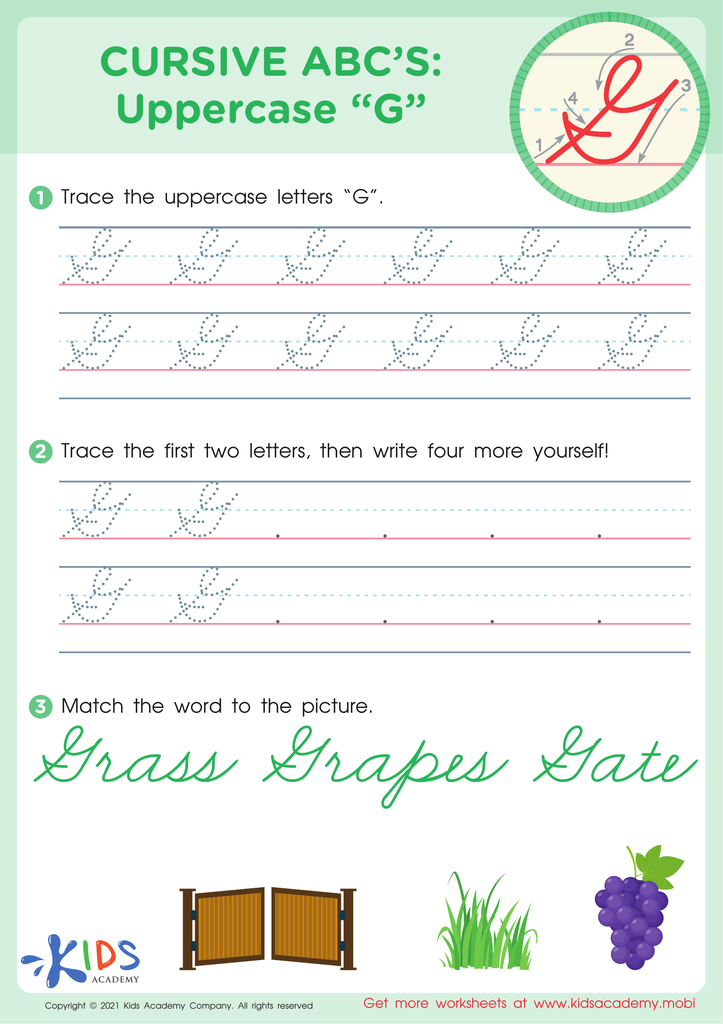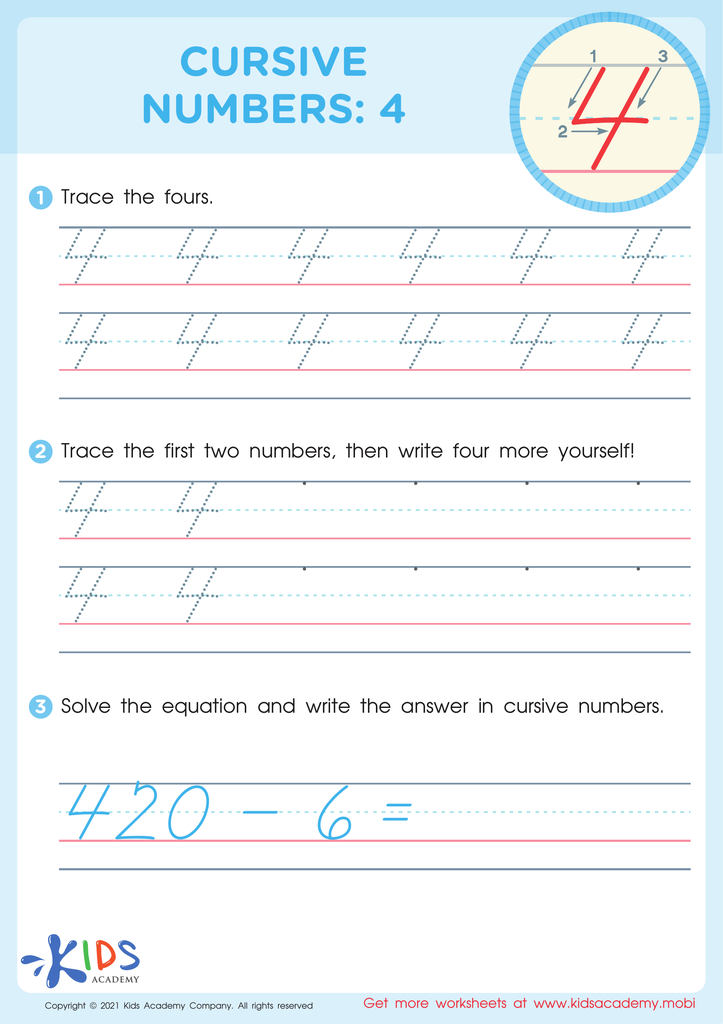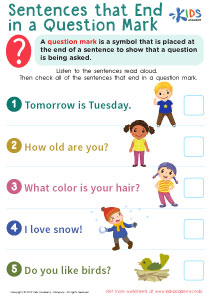Fine motor skills development Cursive Writing Worksheets for Ages 6-9
12 filtered results
-
From - To
Unlock your child's potential with our engaging Fine Motor Skills Development Cursive Writing Worksheets, specifically designed for ages 6-9! These worksheets promote essential skills that enhance handwriting while fostering creativity and focus. Children will enjoy a series of fun, interactive exercises that strengthen hand-eye coordination and dexterity as they practice elegant cursive letters and words. The beautifully illustrated sheets provide a seamless blend of learning and fun, ensuring your child remains engaged. Perfect for classroom or home use, these resources establish a solid foundation in writing and contribute to overall fine motor skill mastery. Start your journey toward graceful cursive writing today!


Cursive ABCs: Lowercase d


Cursive ABCs: Lowercase a


Cursive ABCs: Lowercase f


Cursive ABCs: Uppercase F


Cursive ABCs: Uppercase G


Cursive ABCs: Uppercase D


Cursive Numbers: 7 Worksheet


Cursive Numbers: 1 Worksheet


Cursive ABCs: Lowercase c


Cursive ABCs: Lowercase h


Cursive ABCs: Lowercase b


Cursive Numbers: 4 Worksheet
Fine motor skills development, particularly through cursive writing, is crucial for children aged 6-9. During this developmental stage, children are refining their hand-eye coordination and dexterity, which are foundational for effective writing and other everyday tasks. Cursive writing engages these skills by promoting fluidity, strength, and precision in hand movements. Unlike print writing, cursive allows for natural wrist movement, enhancing grip and control.
Moreover, cursive writing supports cognitive development. The brain engages multiple processes—language, visual perception, and motor control—stimulating neural pathways critical for learning. Mastery of cursive can boost a child’s focus and persistence, vital traits that extend beyond writing.
In an era dominated by technology, emphasizing cursive writing encourages children to appreciate traditional forms of communication, fostering a deeper connection to written expression—think personal letters, journaling, or art.
Furthermore, cursive writing is linked to improved memory retention. Studies suggest that students who write in cursive often understand and remember material more effectively.
For parents and teachers, fostering fine motor skills through cursive writing is key to preparing children for academic success and ensuring they develop the confidence necessary to communicate effectively in both their educational and personal lives.
















